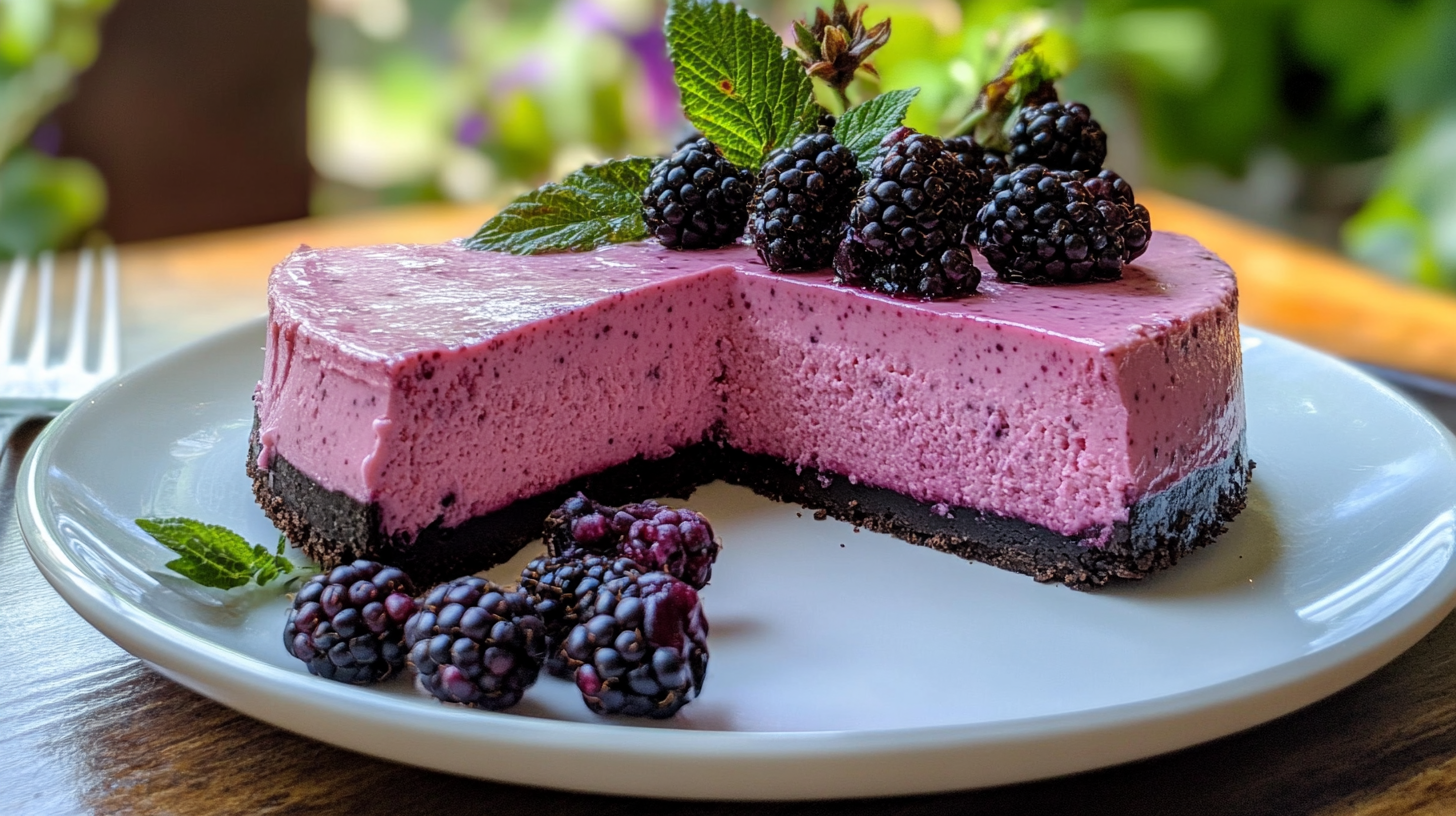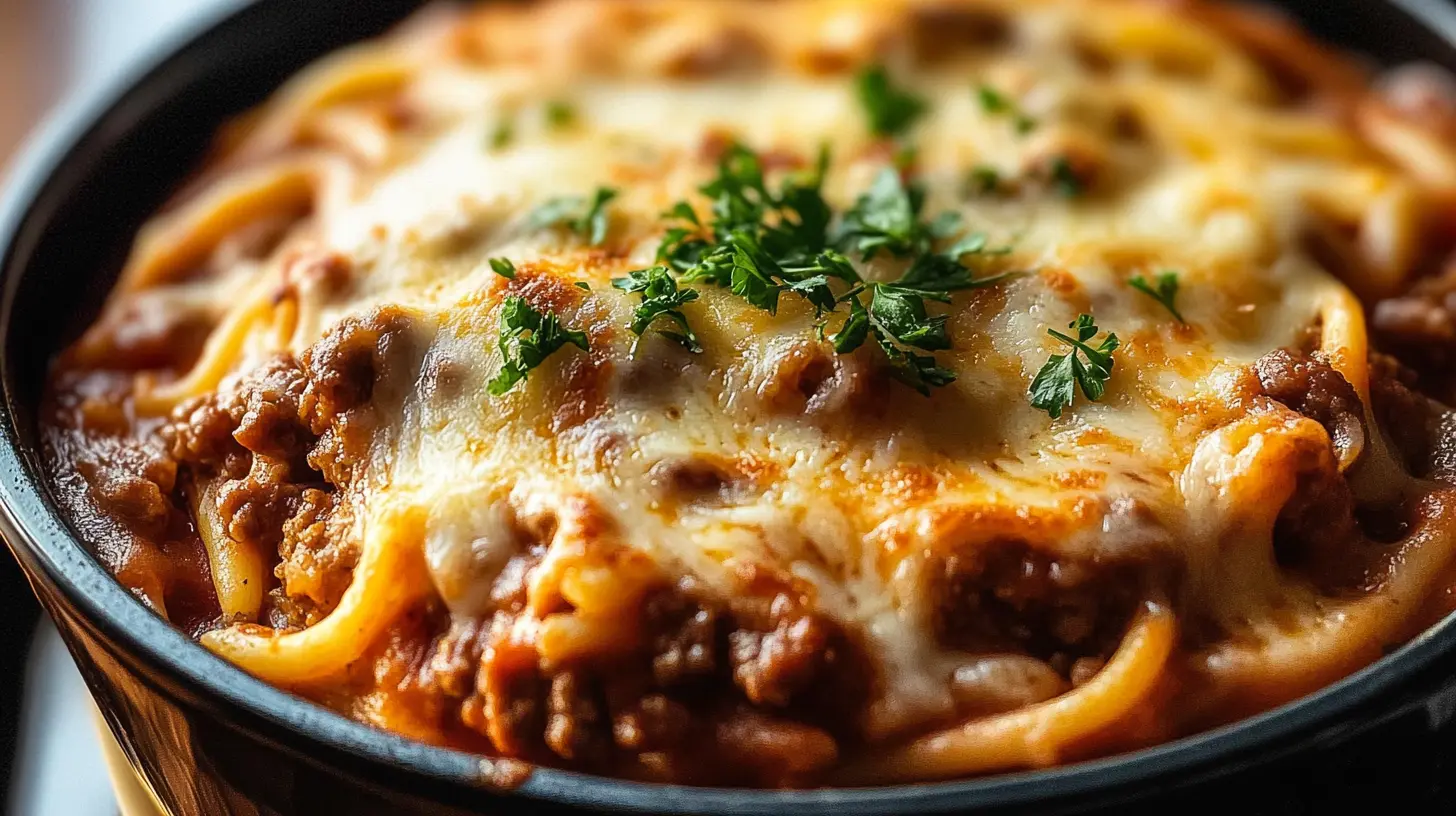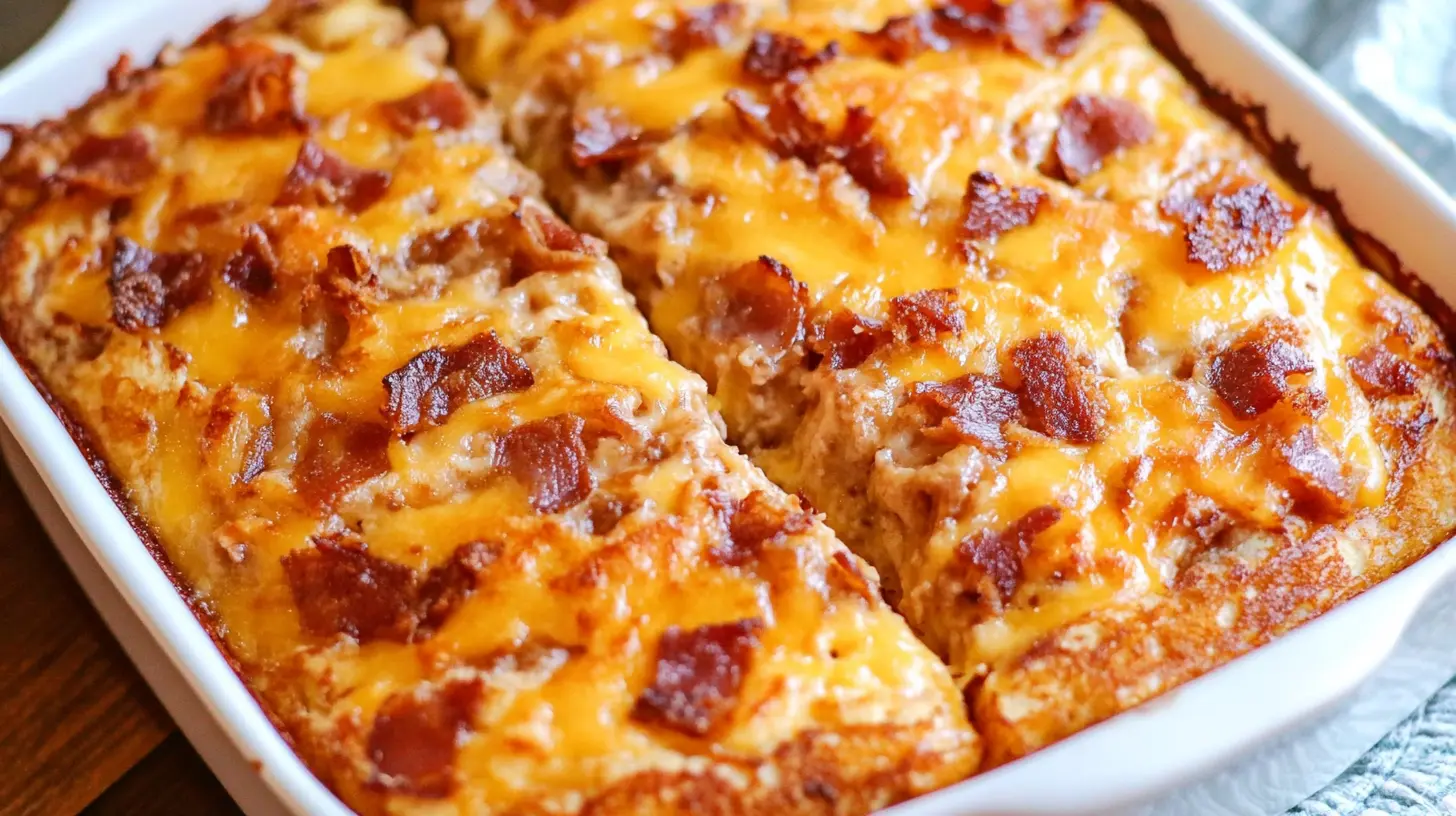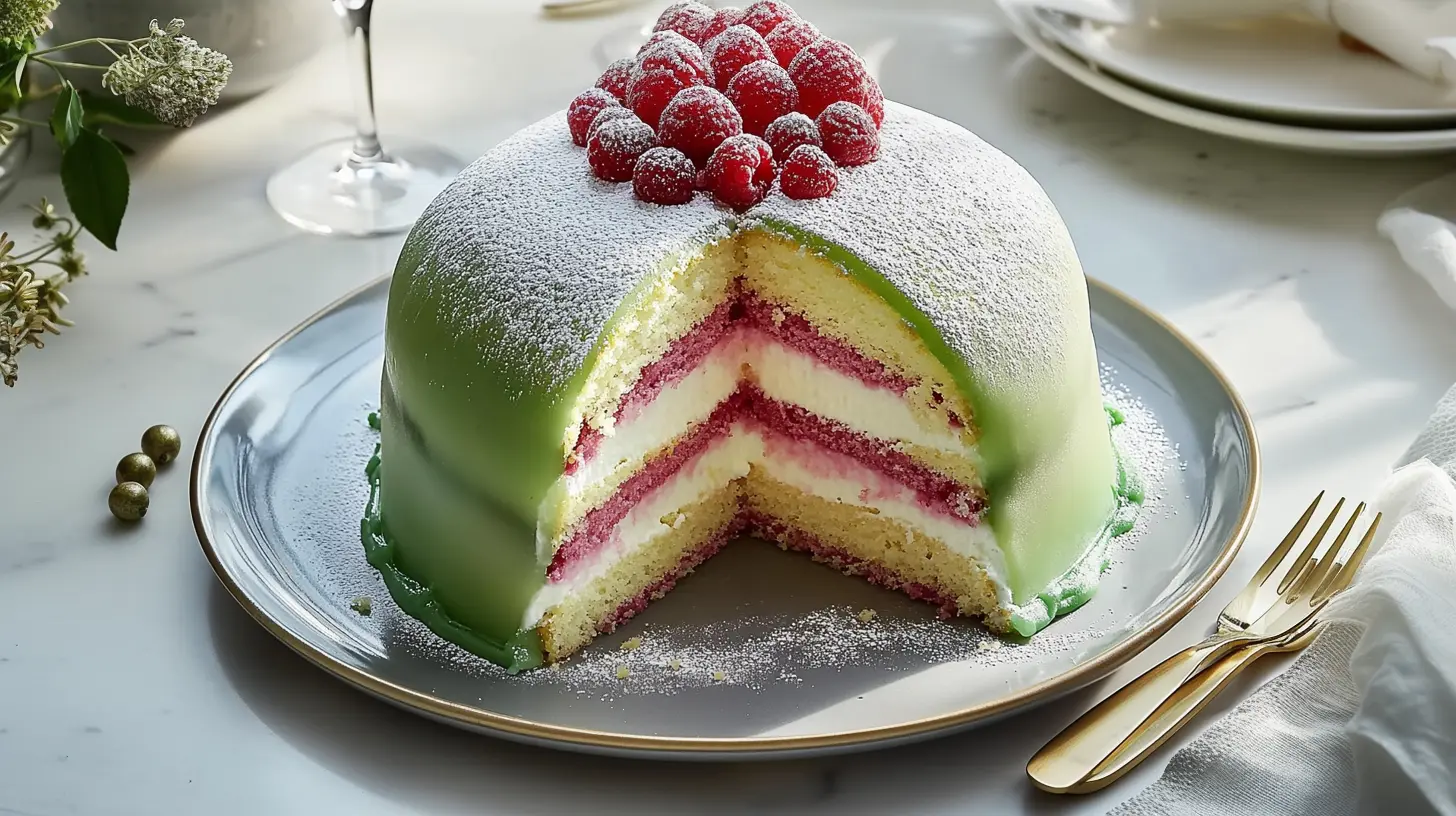Introduction to Blackberry Cheesecake Recipe
Indulge in the rich, fruity flavors of a Blackberry Cheesecake — a dessert that not only tantalizes the taste buds but also provides a delightful visual treat. Whether you’re a home cook, a busy parent, or a student on the go, this blackberry cheesecake recipe is easy to prepare and customizable for various dietary needs. In this article, we’ll walk you through the process of creating a creamy and luscious blackberry cheesecake that’s perfect for any occasion.
This dessert is ideal for anyone looking for a crowd-pleaser with minimal effort. With its vibrant blackberries, rich cream cheese, and buttery crust, it offers the perfect balance of sweet and tangy. Plus, blackberries are packed with antioxidants and vitamins, making this dessert not just a treat for your taste buds but a slightly healthier option as well. You’ll soon discover why this blackberry cheesecake recipe is a favorite among food enthusiasts and why it stands out from other cheesecake varieties.
Benefits and Advantages of Blackberry Cheesecake Recipe
When it comes to creating a dessert that wows both in taste and presentation, this blackberry cheesecake recipe has numerous advantages.
1. Simple Preparation:
The beauty of this cheesecake recipe lies in its simplicity. With easy-to-follow steps, even novice bakers can whip up a professional-looking dessert. There’s no need for complex equipment or advanced baking skills, making it accessible to everyone from students to seniors.
2. Versatile and Customizable:
Whether you’re vegan, gluten-free, or watching your sugar intake, this recipe can easily be adapted. We’ve included various substitution options so that no one has to miss out on this delightful dessert.
3. Nutritional Benefits of Blackberries:
Blackberries are a powerhouse of nutrients. They’re rich in fiber, vitamin C, vitamin K, and antioxidants, all of which help to support a healthy diet. This cheesecake offers the perfect way to indulge while still incorporating a healthy fruit into your meal.
4. Perfect for Any Occasion:
From family gatherings to romantic dinners, this blackberry cheesecake fits every occasion. Its vibrant purple hue, coupled with its creamy texture, makes it an impressive centerpiece for any dessert table.
Looking for more delightful dessert ideas? You can explore other recipes like the cinnamon roll cheesecake recipe.
Ingredients Overview
Essential Ingredients for Blackberry Cheesecake Recipe
To craft this delicious blackberry cheesecake, you’ll need the following ingredients:
- For the Crust:
- 1 ½ cups of graham cracker crumbs
- ⅓ cup melted butter (or coconut oil for a vegan option)
- ¼ cup sugar or a natural sweetener like agave syrup
- For the Filling:
- 16 oz cream cheese (use dairy-free cream cheese for a vegan cheesecake)
- 1 cup powdered sugar
- 2 large eggs (use flax eggs as a vegan substitute)
- 1 tsp vanilla extract
- 1 ½ cups fresh blackberries (or frozen, thawed)
- For the Topping:
- 1 cup blackberries
- ½ cup sugar
- 1 tbsp cornstarch mixed with 1 tbsp water
Dietary Substitutions to Customize Your Blackberry Cheesecake
- Vegan Option:
Swap regular cream cheese for a vegan alternative and use flax eggs (1 tbsp flaxseed meal mixed with 3 tbsp water per egg). - Gluten-Free Option:
Use gluten-free graham crackers for the crust. Ensure all other ingredients, like cornstarch and vanilla extract, are gluten-free. - Low-Sugar Option:
Use sugar substitutes like stevia or monk fruit sweetener to lower the sugar content without compromising on flavor.
Tip: You can also experiment with almond or coconut flour for the crust to suit keto diets. For more customizable cheesecake ideas, check out cheesecake brownies on our blog.
How to Prepare the Perfect Blackberry Cheesecake: Step-by-Step Guide
Creating the perfect blackberry cheesecake requires just a few steps. Here’s how you can do it:
First Step: Prepare the Crust
- Preheat your oven to 325°F (160°C).
- In a bowl, mix the graham cracker crumbs, melted butter, and sugar until well-combined.
- Press the mixture into the bottom of a springform pan to form an even layer.
- Bake the crust for 10 minutes, then set it aside to cool.
Second Step: Prepare the Blackberry Puree
- In a small saucepan, combine 1 cup of blackberries and ½ cup of sugar.
- Cook over medium heat, stirring occasionally until the blackberries break down.
- Mix cornstarch and water, then stir it into the blackberry mixture.
- Continue cooking until the mixture thickens into a sauce. Set aside to cool.
Third Step: Prepare the Cheesecake Filling
- In a large bowl, beat the cream cheese and powdered sugar until smooth.
- Add the eggs one at a time, mixing well after each addition.
- Stir in the vanilla extract and 1 ½ cups of blackberries, gently folding the berries into the mixture.
Fourth Step: Assemble the Cheesecake
- Pour the cheesecake filling over the cooled crust.
- Drizzle half of the blackberry puree on top of the filling and use a knife to swirl it through the batter.
- Bake the cheesecake for 50-60 minutes, or until the center is set but still slightly jiggly.
- Allow the cheesecake to cool to room temperature before refrigerating for at least 4 hours, or overnight.
Fifth Step: Add the Topping
- Once the cheesecake has chilled, pour the remaining blackberry puree on top.
- Garnish with fresh blackberries and serve.
For additional tips on perfecting your cheesecake, check out apple crumble cheesecake.
Mastering Blackberry Cheesecake: Advanced Tips and Variations
1. Avoid Cracks in the Cheesecake:
To prevent cracks in your cheesecake, avoid overmixing the batter and use a water bath during baking.
2. Try a No-Bake Version:
For a quicker, no-bake version, skip the eggs and baking. Simply refrigerate the cheesecake for several hours until set.
3. Experiment with Flavors:
Consider adding lemon zest for a tangy twist or using different berries like raspberries for a colorful variation.
How to Store Blackberry Cheesecake: Best Practices
- Refrigeration:
Store your cheesecake in the refrigerator for up to 5 days, ensuring it’s covered to maintain freshness. - Freezing:
To freeze, wrap the cheesecake tightly in plastic wrap and foil. It can be stored for up to 3 months. Thaw overnight in the fridge before serving. - Reheating:
For a warm dessert experience, let frozen cheesecake slices sit at room temperature for 15-20 minutes before serving.
Nutritional Value of Blackberry Cheesecake
Here’s the approximate nutritional information for one slice of this blackberry cheesecake:
- Calories: 350
- Fat: 22g
- Protein: 7g
- Carbohydrates: 30g
- Fiber: 3g
- Sugar: 18g
The nutrition will vary based on ingredient substitutions. For a healthier dessert, consider reducing the sugar content or using a low-fat cream cheese alternative.
FAQs: Frequently Asked Questions About Blackberry Cheesecake Recipe
How to Make a Mary Berry Cheesecake?
Mary Berry, one of Britain’s most famous bakers, is known for her classic cheesecake recipes. A typical Mary Berry cheesecake is no-bake and uses simple ingredients like cream cheese, double cream, and a digestive biscuit base. To make a Mary Berry-style cheesecake:
- Start with a digestive biscuit base by crushing the biscuits and mixing with melted butter. Press this mixture into the bottom of your springform pan and chill in the fridge.
- Whisk the cream cheese and sugar until smooth.
- In a separate bowl, whip the double cream until it forms soft peaks and fold it into the cream cheese mixture.
- Spoon the cream mixture onto the biscuit base and refrigerate for at least 4 hours before serving.
What Not to Do When Making Cheesecake?
When making cheesecake, there are several common mistakes to avoid:
- Overmixing the Batter: Be careful not to overbeat your cheesecake batter as this can introduce too much air, which may cause the cheesecake to crack when baking.
- Baking at Too High a Temperature: Cheesecake should be baked at a low temperature to ensure a creamy, smooth texture. High heat can result in cracks and a rubbery texture.
- Skipping the Water Bath: A water bath (or bain-marie) helps regulate the temperature and adds moisture to the baking process, reducing the chance of cracks.
What’s the Difference Between New York Style Cheesecake and Regular Cheesecake?
New York-style cheesecake is richer and denser than regular cheesecake due to the addition of more cream cheese and extra egg yolks. It often has a slight tang, thanks to the inclusion of sour cream or heavy cream. Regular cheesecake, on the other hand, tends to be lighter, fluffier, and can include ingredients like cottage cheese or ricotta to achieve a different texture. New York cheesecake is typically baked in a water bath and served without many toppings, focusing on its creamy, rich flavor.
Why Do You Put Vinegar in Cheesecake?
Vinegar is rarely used in cheesecake, but it can serve as a substitute for lemon juice to add a slight tang and acidity. Some bakers may use a touch of vinegar to help balance out sweetness and enhance the overall flavor profile of the cheesecake. However, it’s more common to use lemon juice or sour cream to achieve this balance.
Which Baking Method Is Best for Cheesecake?
The best baking method for cheesecake is baking in a water bath. A water bath provides even heat distribution and prevents the edges from cooking faster than the center. This method also introduces moisture into the oven, helping the cheesecake maintain a smooth and creamy texture while preventing cracks on the surface. Alternatively, you can make no-bake cheesecakes that set in the refrigerator without any need for baking.
Can I Use Pectin Instead of Gelatin in Cheesecake?
Pectin can be used as a thickener, but it’s not a direct substitute for gelatin in cheesecake. Pectin is typically used in fruit preserves and requires sugar and acid to set properly. Gelatin, on the other hand, is more suited for setting creamy mixtures like cheesecake. If you’re making a no-bake cheesecake and want to avoid gelatin, you may want to explore other plant-based thickeners like agar-agar.
What Makes Cheesecake Taste So Good?
The taste of cheesecake is derived from its unique combination of tangy cream cheese, rich dairy (like sour cream or heavy cream), and sweet flavors. The creaminess of the filling, balanced with a buttery crust, offers a satisfying contrast of textures and flavors. Additionally, the slight tang from cream cheese or sour cream provides a depth of flavor that makes cheesecake irresistible to many.
Can I Use Apple Cider Vinegar Instead of Vinegar in Cake?
Yes, apple cider vinegar can be used as a substitute for regular vinegar in cakes. It adds a slight fruitiness that pairs well with many dessert flavors. Apple cider vinegar works particularly well in vegan cakes, where it helps activate baking soda to create a rise in the batter.
Is Lemon or Vinegar Better for Cheese?
Both lemon juice and vinegar can be used to make fresh cheeses like ricotta or paneer. Lemon juice tends to provide a milder, slightly citrusy flavor, while vinegar gives a more neutral acidity. The choice depends on your flavor preference, but both work effectively for curdling milk in cheese-making.
Can I Use Jello Instead of Pectin?
You cannot use Jello as a direct substitute for pectin. Although Jello contains gelatin, which works as a thickening agent, it also includes added sugars and flavors. These extra ingredients may alter your recipe’s final outcome. Typically, pectin is used in jams and jellies when you want a firmer set without introducing any additional flavors. Therefore, it’s better to use pectin if you’re aiming for a traditional result in fruit-based recipes.
Can I Use Lemon Instead of Pectin?
Yes, you can use lemon juice to enhance the natural pectin in fruits, especially when making jams or jellies. Although it doesn’t replace pectin directly, lemon juice provides the necessary acidity that helps pectin work more effectively. Additionally, in cheesecakes, lemon juice is often used to add flavor rather than as a thickener. So, if you’re looking to boost both taste and pectin activity, lemon juice is a great option.
What Is the Thickening Agent in Cheesecake?
The primary thickening agent in cheesecake is cream cheese, which gives the dessert its characteristic creamy texture. In no-bake cheesecakes, gelatin or agar-agar helps the mixture set without the need for baking. On the other hand, in baked cheesecakes, eggs play the key role in thickening. As the cheesecake bakes, the eggs coagulate, giving the cheesecake a firm and smooth structure.
Conclusion
Cheesecake is a timeless dessert beloved for its rich, creamy texture and delightful flavor. Whether you’re making a classic New York-style cheesecake or a fruity variation like blackberry cheesecake, understanding the techniques and ingredients involved will help you achieve the best results. From using fresh or frozen blackberries to choosing between pectin or gelatin, mastering cheesecake is all about balance, texture, and flavor.
If you’re looking for more tips on how to perfect your cheesecake, check out this informative guide on the history and variations of cheesecake on Wikipedia. With a few expert tips and the right ingredients, you can create a cheesecake that everyone will love.
For more answers to your cheesecake questions, visit our lemon blueberry cheesecake guide.
This concludes the Blackberry Cheesecake Recipe article! Ready to try this delicious dessert? Don’t forget to check out other related cheesecake recipes like cheesecake fondue to expand your dessert repertoire.




